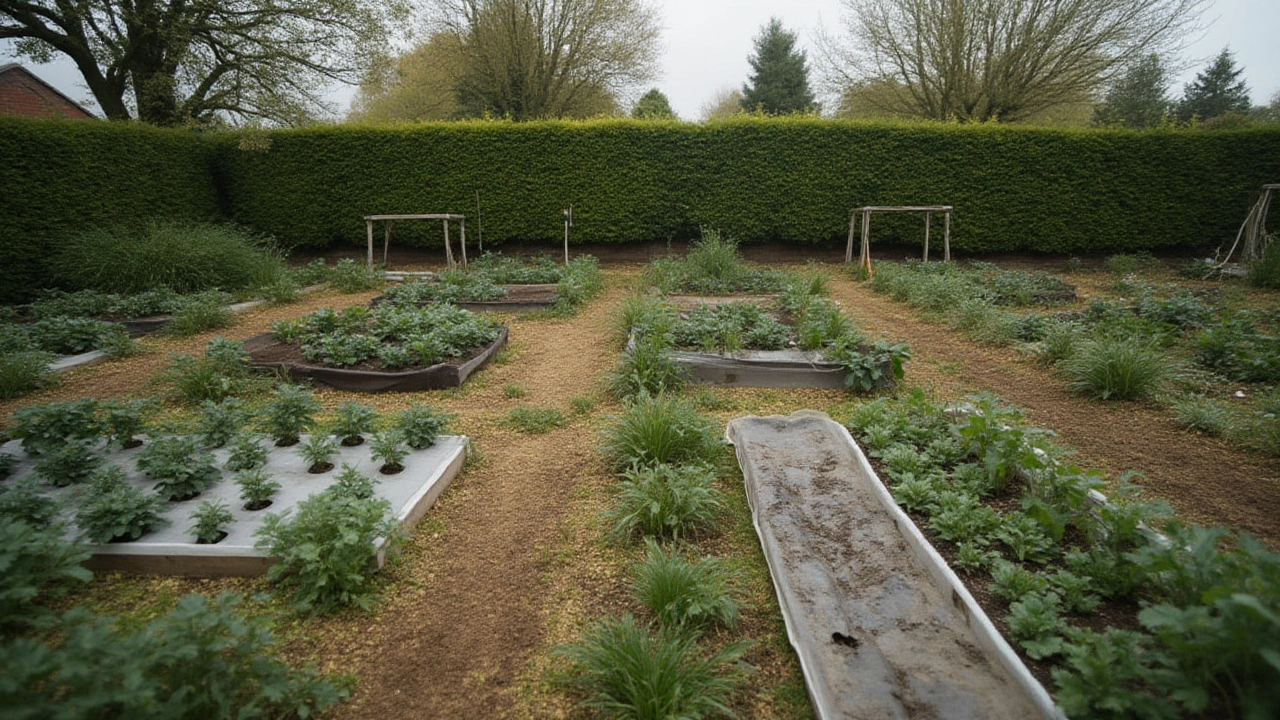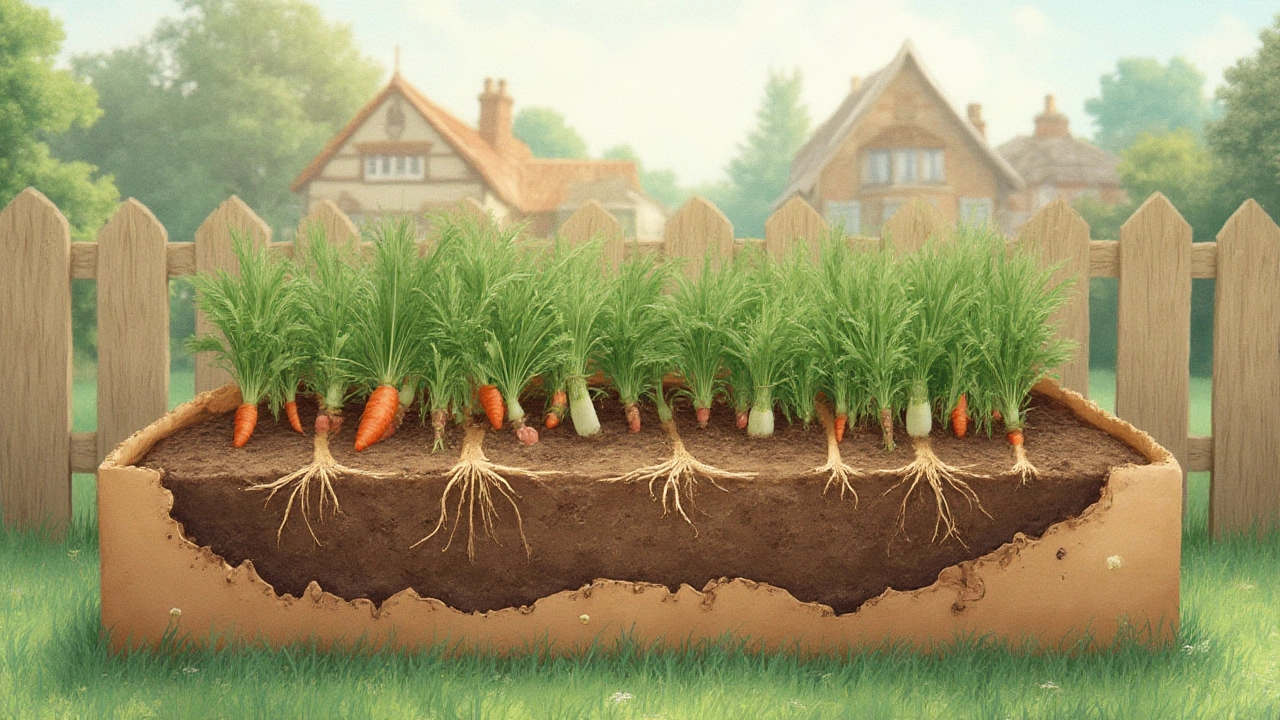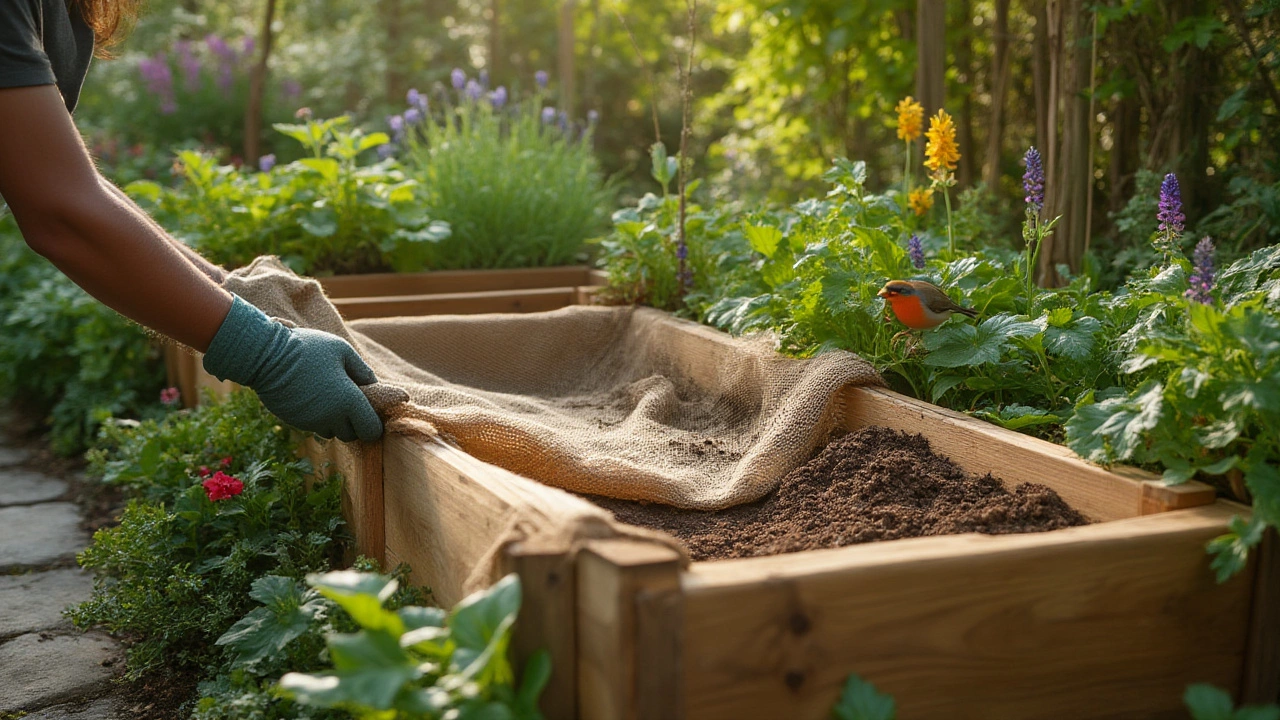Ever dig into your garden bed and find more than just plant roots—maybe a shocking burst of weeds, soil that slips away too fast, even a trail of bugs hunkering down where your veggies should be? Lining your garden bed can feel just as crucial as picking the seeds. But the world is awash with lining options, and plenty of folks wonder what’s actually the best. Some swear by plastic sheets, others stash cardboard at the bottom, and fabric lovers say nothing beats a good landscape cloth. So what gives? Let’s pull apart the big contenders and see what stands tall after a season in the sun (or rain, or marauding roots).
Why Line a Garden Bed? Real Problems and Practical Fixes
There’s always a reason for any garden hack, and lining raised beds isn’t just about copying the neighbors. Start with weed control. If you’ve dealt with grass sneaking up, you know how stubborn those roots are. Without a barrier, invasive weeds, grass, and even tree roots can worm into that beautiful loamy mix, sucking up nutrients and water your carrots desperately need. Lining acts like a neighborhood watch, keeping out the riff-raff while letting your prized crops thrive.
Water drainage is the next big thing. Raised beds need soil that’s moist but not soggy—roots hate wet feet. Line with the wrong material, and water either puddles (hello root rot) or vanishes so fast, your plants look thirsty even after a rainstorm. Good liners regulate this: they let just enough water slip out, but not too much. Plus, a liner can help prevent your premium soil blend from gradually vanishing into the earth below, which saves money over time, especially with high beds.
Now, rot and pests—two things that ruin the best gardening plans. Direct soil contact with wood (especially untreated stuff) invites rot and can burn through raised beds years sooner than expected. Termites and ants love untreated lumber, especially if you skipped a barrier. Even preservative-treated lumber does better with a buffer. Some liners, like heavy-duty fabrics or plastics, keep insects and rot away. But each material has its own quirks, and the wrong choice could leave you with a bigger mess.
Temperature swings also come into play. Exposed soil heats up and cools down fast, but lining with the right product helps insulate, stabilizing temps for tender seedlings. On top of all that, some gardeners line their beds simply because cleanup is easier at the end of the season. Ever tried digging out old soil from the corners of a naked wooden bed? It’s a workout worthy of the gym.
Finally, if your garden sits on potentially contaminated ground (think old construction sites, lead paint flakes, or treated railroad ties nearby), a tough liner adds a barrier that keeps roots from picking up nasties. Food safety isn’t just for canning days—it starts at the root.
But, not all lining options are created equal. Some help solve one problem while causing another, so picking the best comes down to the material, where you live, and exactly how you garden.

The Main Players: Comparing Popular Garden Bed Liner Materials
The garden aisle or the average shed is packed with potential lining materials, each with fierce fans. Let’s break down the contenders:
- Landscape Fabric: Marketed for keeping weeds away, this thick woven plastic lets water pass but blocks most intruders. Professional landscapers rely on fabric for weed control, and so do home gardeners. High-quality landscape fabric (think name brands, not the cheapest plastic roll) lasts 5-10 years underground. It allows water and air to pass and is unbeatable for lining bed bottoms, especially over grass or weed-prone areas. But not all landscape fabric is created equal—some cheap versions break down fast, leaving you fighting a jungle after two seasons. Always check reviews for UV stability and permeability. If you’ve got deep-rooted crops like tomatoes, you may want to cut slits or go for a hybrid method to ensure roots aren’t restricted.
- Cardboard: Free, biodegradable, and dead simple, cardboard breaks down over a few months, smothering weeds in the process. It’s the go-to for ‘lasagna gardening.’ Lay down a layer or two, overlapping edges so no sunlight gets through. It’ll block the weeds long enough for your veggies to get a head start, then slowly degrade into soil, feeding earthworms. Downside? If your weed problem is serious—think kudzu, bindweed, or Bermuda grass—cardboard will eventually give up the ghost. Also, any shiny, slick boxes with colored inks can introduce chemicals, so stick to plain brown types.
- Plastic Sheeting: Plastic (black poly, thick contractor bags, pond liners) is waterproof and blocks everything: soil, weeds, air, water—unless you punch holes. Heavy plastic can line the interior sides of a wooden raised bed to stop moisture reaching the wood, boosting bed life. But used flat on the bottom, plastic holds water like a bathtub. Roots suffocate, beds flood after rain, and you’ll soon see sad, yellowed leaves. Best use? Staple plastic on the inside bed walls only—never across the bottom—and always cut drainage holes at the base.
- Newspaper: Cheap, available in bulk, and eco-friendly, newspaper works a lot like cardboard. Stack it in thick, overlapping layers to suffocate weeds. It lasts just a season or so, and by year two, you’ll have to reapply. Avoid glossy print or colored ads—those old-school black-and-white pages only. Newspaper also speeds up earthworm activity as they munch through, but can get soggy and collapse if your climate is really wet.
- Hardware Cloth (Wire Mesh): If burrowing pests (moles, gophers, voles) turn your garden into Swiss cheese, galvanized hardware cloth is king. Lay it on the bottom (never up the sides), then add your liner of choice above. It physically stops furry invaders, lasts for years, and won’t mess with drainage. Mesh size around 1/4 inch is typical—enough to keep out even crafty rodents.
- Coconut Coir Mats and Burlap: For the all-organic crowd, coir and burlap are biodegradable but tougher than cardboard. Coir mats soak up water, offer gentle protection, break down over a couple of seasons, and won’t shed microplastics. Burlap is similar, though it decomposes faster. These options cost more (unless you score a bulk deal) but hit the right notes for eco-minded gardeners who want performance with a light footprint.
- No Liner: Old-school purists sometimes go liner-free, especially in well-drained, weed-free spots. Skipping a liner is simple but risky—especially if you’ve got tough roots or pests nearby. You’ll save time, and your plants’ roots won’t face barriers. If you’re sure of your soil and location, you might get away clean.
Each of these materials shifts in effectiveness depending on your climate, soil, and pest pressure. For example, in the wet Pacific Northwest, cardboard may rot too quickly, while in hot, dry Arizona, plastic liners can overheat soil. In frost-heavy zones, hardware cloth makes sense, since rodents seek warm soil in winter.
The trend among serious gardeners is toward layered solutions: mesh or cloth for burrowers on the bottom, landscape fabric or cardboard above, maybe plastic just on interior sides if rot is a concern. The real pros mix and match instead of betting it all on one strategy.
And here’s something crazy: studies by the University of California Cooperative Extension show that mulch alone (wood chips two inches thick) on top of soil outperforms any liner when it comes to stopping annual weeds once the bed is planted. So, your lining combo can get even more powerful teamed up with a deep, natural mulch.

Smart Tips for Choosing and Installing the Best Garden Bed Liner
Picking a winner starts with knowing your backyard villains. Got tree roots in your raised bed? Hardware cloth is your new friend. If rot haunts your beds, line the interior sides with heavy plastic (just make sure you cut drainage holes so you don’t turn the bed into a swamp). Fighting weeds? Use cardboard or quality landscape fabric across the bottom—but watch for sneaky gaps where tough grass can wiggle through.
Install smart. For maximum weed control, overlap sheets at least six inches so no cracks appear. Cut hardware cloth to the inside dimensions of your raised bed and use heavy-duty garden staples or fencing clips to pin down corners. If you’re layering (like many pro gardeners do), lay hardware cloth first, then cover with landscape fabric or cardboard, then dump in your soil. Never stretch plastic across the bottom unless you’re growing in an arid zone and actually want to trap moisture. Otherwise, plastic goes up the inner sides—never across the floor.
Think about how long you want the liner to last. If you move beds yearly or like rotating crops, cardboard or newspaper keeps it simple. If you want a low-maintenance, permanent setup, landscape fabric or hardware cloth lasts longest. If you garden organically, stay away from plastics that might leach. Check packaging for any chemical treatments (for example, some landscape fabrics have coatings—read the label if food safety is a worry).
If you make your own compost, tossing scraps from old cardboard liners right into the bin is a bonus. But if you rely on old-school plastic, plan on a landfill trip when it breaks down. As for coconut coir and burlap, they’ll break down and feed the soil microbes for you, ticking the sustainability box without much effort.
Want to go a step further? Try this pro tip: before adding your liner, inspect the ground for burrows, rocks, or other obstacles. Flatten with a hoe or rake, tamp down tunnels, and pull up any aggressive perennial weeds by hand so the liner isn’t fighting a losing battle from day one. And if your raised bed is on poor or rocky soil, even more reason to get the liner game right—nothing kills enthusiasm like seeing your amended soil vanish into the ground you just worked so hard to improve.
Fancy a hack? If you live in snake or tick country and worry about critters setting up shop under your bed, consider using a double-layer mesh (hardware cloth for burrowers, then lightweight window screen for tick control). It’s old-fashioned pest exclusion at its best.
Remember, every garden’s unique, but lining a bed right means fewer weeds, fewer pests, longer-lasting wooden beds, and healthier, safer crops. The up-front effort pays back every time you dig fresh carrots or fill a basket with tomatoes instead of wrestling a spreading patch of bindweed. Take some time picking your liner, customize as needed, and you’ll spend the rest of the season enjoying the simple things—like not fighting the soil every day.
